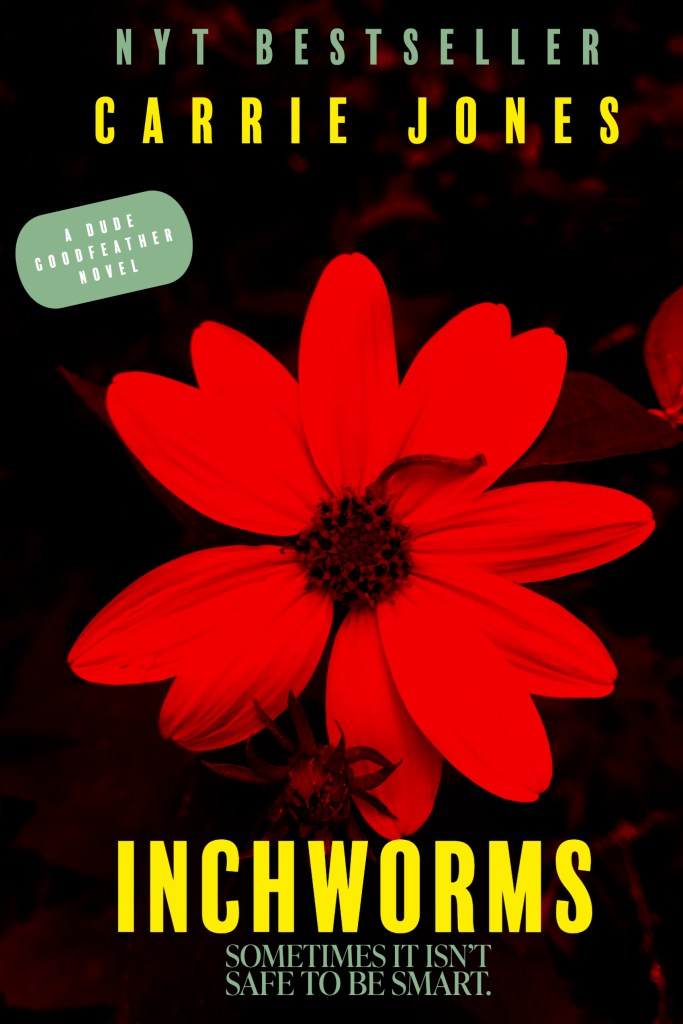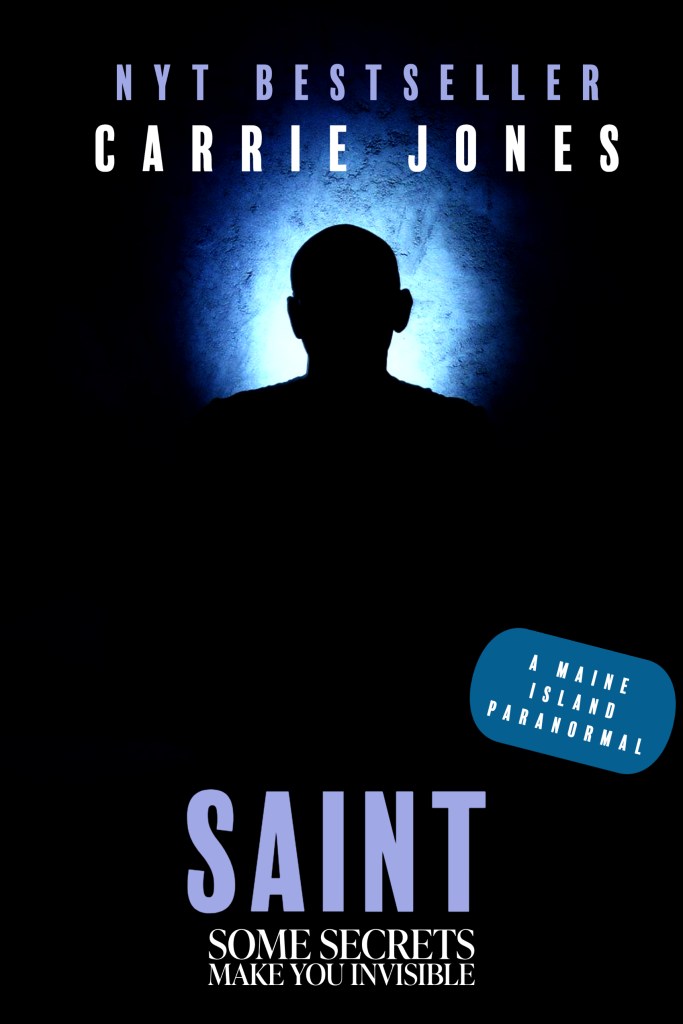
Lately, Carrie has been talking to a lot of writers that she coaches and edits about settings.
That’s because a lot of writers are blowing them off. So, she’ll read a lot of passages like this:
“Hey,” I sit at my desk, “you coming over later?”
“Yep,” Shaun says.
“Cool.”
“I thought maybe we could have some hanky-panky.”
“Okay?”
So, we know that Shaun wants to have some hanky-panky and the “I” of the story is sitting at their desk. But we don’t know what kind of desk, where that desk is, if there are other people around, or even how she or he or they are reacting to Shaun’s request for hanky-panky, right?
Setting is obviously the place where things happen, but it’s more than that, right?
Setting makes your characters real. It grounds them. It shows the reader what’s going on without saying, “Yo, reader. This is what’s going on.”
What do we mean? Well, here, let’s play with the setting of that excerpt above.
“Hey,” I sit at my desk, flipping through some tentacle porn, “you coming over later?”
The dirt-streaked wall of my cubby gives a bit with the pressure of his hand, holding him up as he leans over my shoulder. “Yep.”
Betty is just on the other side of that cubby wall and beyond her is my boss, the other workers, everyone typing on their computers, pretending to be busy reading emails, analyzing data, reading contract clauses. Liars all. The air smells of old coffee and pot, broken things, broken people.
It doesn’t matter. Nothing matters.
“Cool.” That’s all I say.
Shaun clears his throat, moves lower, closer to me, my hard metal desk, standard issue. His giant elbow brushing against the wall again. His voice is a low whisper. “I thought maybe we could have some hanky-panky.”
Someone coughs. That someone is Betty. I flip the page. A tentacle is exploring places on an elf that should probably not be explored. Shaun doesn’t smell like old coffee. He smells of sandalwood and pine, like man.
“Okay,” I whisper. “Okay.”
Totally different, right?
Now we have a lot more context even if we don’t know all the details of her office, the chair, the desk. The characters aren’t floating in a void.
Here, one more example before we move on. Same dialogue again. But different setting and different feelings.
“Hey.” Holding my phone in my hand, I sit at my broad, metal work desk, give up and stand on it, pushing the papers and books about writing and being a freelance human off with my heel. They flutter to the floor. From up here, I can see everyone. Janice with the pink hair. Bob with the coffee stained shirt and no hair. Countless nameless coworkers. I raise my voice into a yell that echoes across the vast space of the office. “You coming over later?”
Bob stares up at me. His mouth gaping open. I can see his fillings. He puts a finger over his lips. I give him a finger of my own. Lights flicker overhead.
“Yep,” Shaun says.
Janice gives me a thumbs up. Beyond her, other coworkers are watching and/or pretending not to watch. The fans above them, hanging from the drop ceiling, spin around and around. My manager opens the door from his office, starts angry striding towards me.
I say, “Cool.”
Across the office, all the way in a prestigious cubby by the dirt-grimed windows, Shaun stands on his own desk and shouts, “I thought maybe we could have some hanky-panky.”
Someone giggles. The world smells of promise, lemon bleach those cleaners use. The manager stops, his bald head turning from Shaun to me to Shaun.
I hang up the phone and yell across everyone. “Okay?”
Setting can reinforce what we’re doing, add context and even tension, right? It can transform an exchange into a story. You don’t want to blow it off. You really want to make it as sexy as possible.
Tips About Setting
Don’t glob it all down in paragraph after paragraph.
Sprinkle it into the dialogue and action like salt.
Let us reiterate: Don’t overdo it.
Seriously. See that first tip up there. It’s like art in your house. You don’t put all the paintings in one room. Spread it out.
Make sure that the details you add are the ones that are important to the reader.
Use setting to add subtext.
You can say “there is a fan in the office” or you can say, “The fans above them, hanging from the drop ceiling, spin around and around.”
Boom! Now you know that they feel trapped and like they are going in circles. Cool, right?
Be weird. Be quirky. Don’t be normal.
Our readers are aware of what a desk is, right? What an office is? But it’s the weird and different things that make a scene and setting matter. Let them see the escaped gerbil running across the floor. Let them hear the sound of a coworker sucking air through their teeth nonstop. Show them the broken blind, twisted and lopsided on the window.
Show the setting as your main character sees it. The readers shouldn’t see the office until the point-of-view character sees the office. Let the setting be discovered by them simultaneously.
WRITING TIP OF THE POD
Settings make a book real. They add dimension and character. Layers. Don’t blow them off.
DOG TIP FOR LIFE
A sexy setting is so important in your life. Surround yourself with dog toys and cozy blankets, twirl around around before flopping down so that you feel perfect.
NEW BOOK ALERT!

I just want to let everyone know that INCHWORMS (The Dude Series Book 2) is out and having a good time as Dude competes for a full scholarship at a prestigious Southern college and getting into a bit of trouble.
Here’s what it’s about:
A fascinating must-read suspense from New York Times bestseller Carrie Jones.
A new chance visiting a small Southern college.
A potential love interest for a broken girl obsessed with psychology.
A damaged group of co-eds.
A drowning that’s no accident.
A threat that seems to have no end.
And just like that Jessica Goodfeather aka Dude’s trip away from her claustrophobic life in Maine to try to get an amazing scholarship to her dream school has suddenly turned deadly. Again.
What would you do to make a difference?
After his best friend Norah was almost abducted, Cole Nicholaus has spent most of his childhood homeschooled, lonely and pining for Norah to move from best friend to girl friend status. When birds follow him around or he levitates the dishes, he thinks nothing of it—until a reporter appears and pushes him into making a choice: stay safe at home or help save a kidnapped kid.
Cole and Norah quickly end up trying to not just save a kid, but an entire town from a curse that has devastating roots and implications for how exactly Cole came to be the saint that he is.
Can Cole stop evil from hurting him and Norah again? And maybe even get together? Only the saints know.
From the New York Times and internationally bestselling author of the NEED series, Saint is a book about dealing with the consequences that make us who we are and being brave enough to admit who we love and what we need.
BUY NOW! 🙂 I made a smiley face there so you don’t feel like I’m too desperate.

SHOUT OUT!
The music we’ve clipped and shortened in this podcast is awesome and is made available through the Creative Commons License.
Here’s a link to that and the artist’s website. Who is this artist and what is this song? It’s “Summer Spliff” by Broke For Free.
WE HAVE EXTRA CONTENT ALL ABOUT LIVING HAPPY OVER HERE! It’s pretty awesome.
We have a podcast, LOVING THE STRANGE, which we stream biweekly live on Carrie’s Facebook and Twitter and YouTube on Fridays. Her Facebook and Twitter handles are all carriejonesbooks or carriejonesbook. But she also has extra cool content focused on writing tips here.
Carrie is reading one of her raw poems every once in awhile on CARRIE DOES POEMS. And there you go! Whew! That’s a lot!
RESOURCES
https://www.esquire.com/news-politics/news/a39179/five-real-life-horror-stories/
https://www.upi.com/Odd_News/2021/07/30/canada-loose-llama-Arkell-Puslinch-Ontario/4701627667041/




 WRITING NEWS
WRITING NEWS